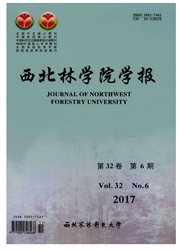

 中文摘要:
中文摘要:
以毛白杨杂种无性系S86号嫁接苗为试验材料,采用(311-A)最优混合设计,研究了氮、磷、钾不同配比对毛白杨苗木生物量的影响,建立了回归模型。结果表明:氮是影响毛白杨生物量的主要因素,其次为磷和钾。在一定范围内,毛白杨生物量随氮、磷、钾肥投入量的增加而增加,过多投入时,生物量将下降。氮肥与磷肥的交互作用显著,有较好的正效应;而氮肥与钾肥、磷肥与钾肥的交互作用不明显。经模型寻优,氮、磷、钾肥的最佳施用量分别为305.550、178.125kg·hm-2和47.700kg·hm-2,毛白杨苗木生物量可达383.874g。
 英文摘要:
英文摘要:
Taking the Populus tomentosa clone S86seedlings as test materials,a field experiment with optimal regression design(311-A)was conducted to study the effects of nitrogen,phosphorus and potassium on the biomass of P.tomentosaseedlings and a regression model was established.The results showed that nitrogen was the main factor affecting the biomass of P.tomentosaseedlings,followed by phosphorus and potassium.With the increasing input of the three factors,the biomass of the seedlings increased,but when the input was beyond a certain level,the biomass began to decrease.There was a significant positive interactive effect between nitrogen and phosphorus,but a less interactive effect between nitrogen and potassium and between phosphorus and potassium.In our case,the optimal application of nitrogen,phosphorus and potassium was 305.550,178.125and 47.700kg·hm-2,under which,the biomass of P.tomentosaseedlings achieved 383.874g.
 同期刊论文项目
同期刊论文项目
 同项目期刊论文
同项目期刊论文
 期刊信息
期刊信息
